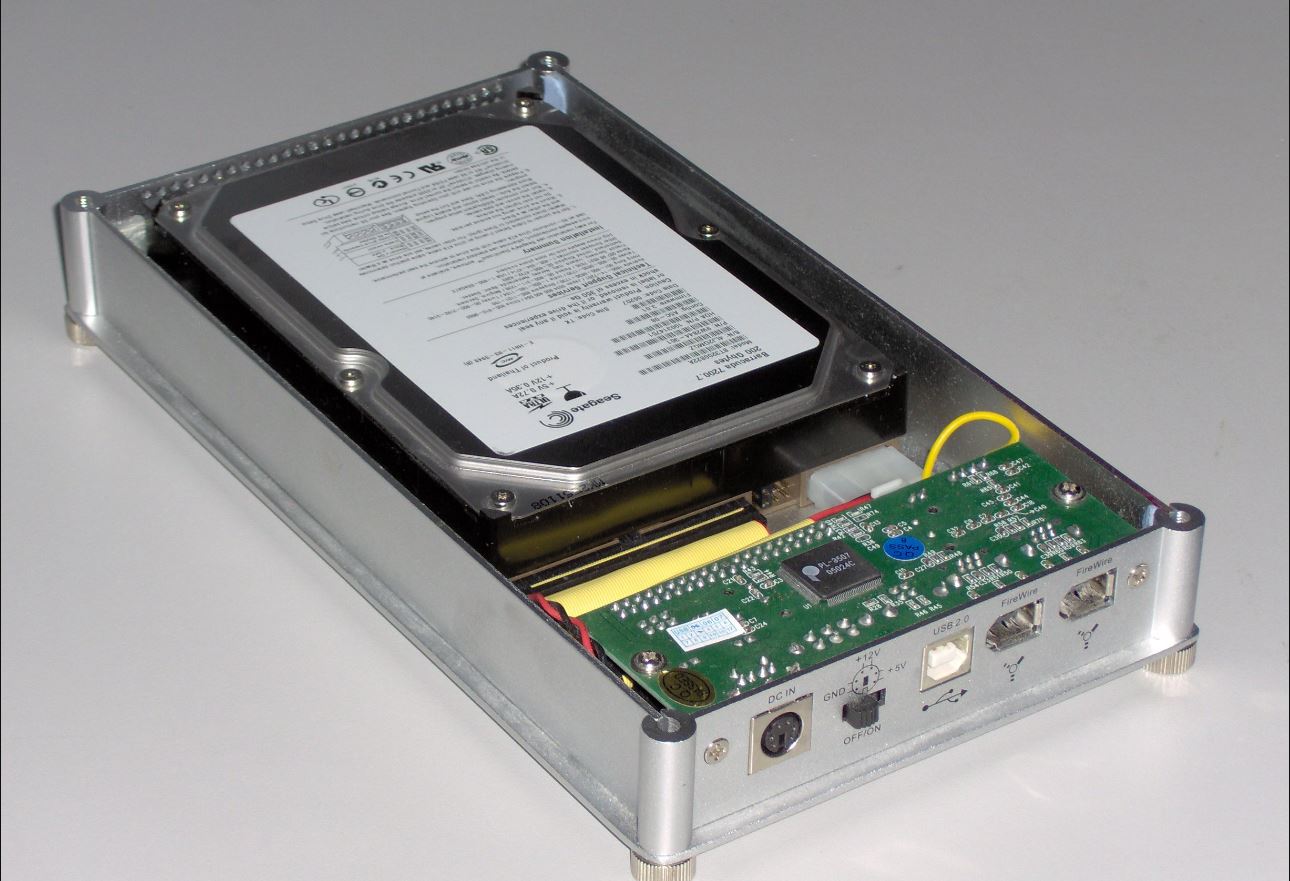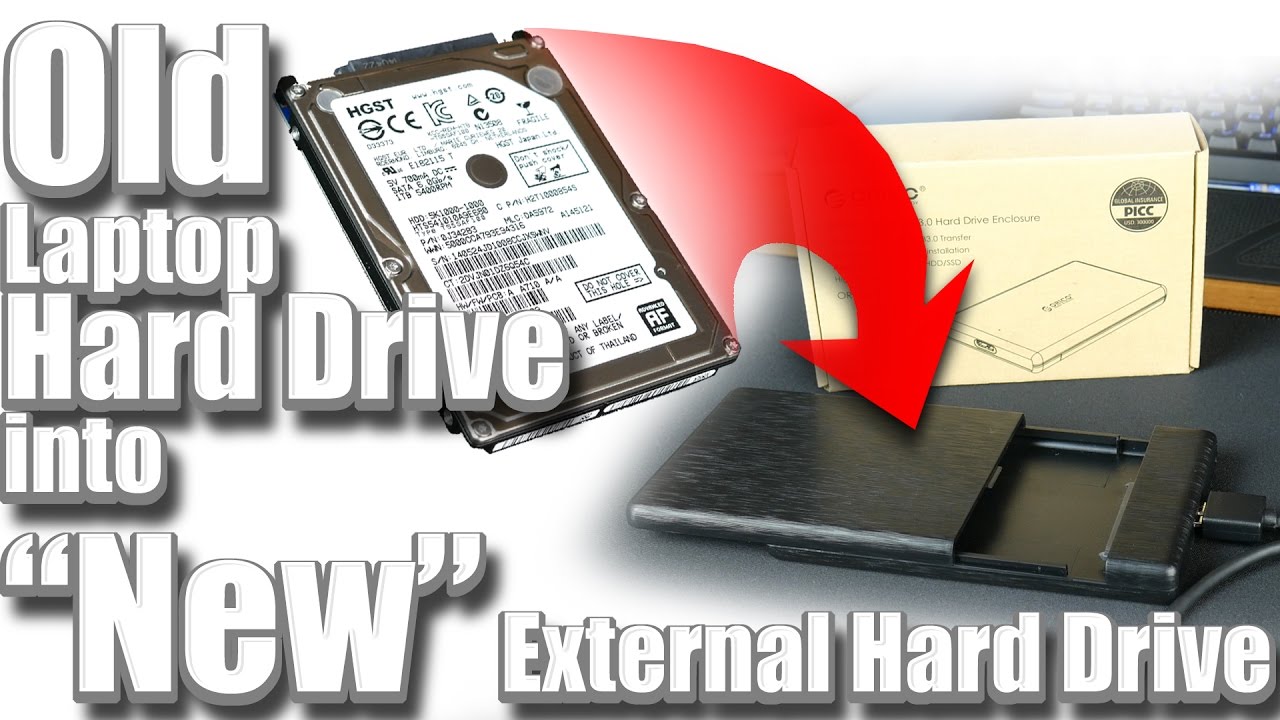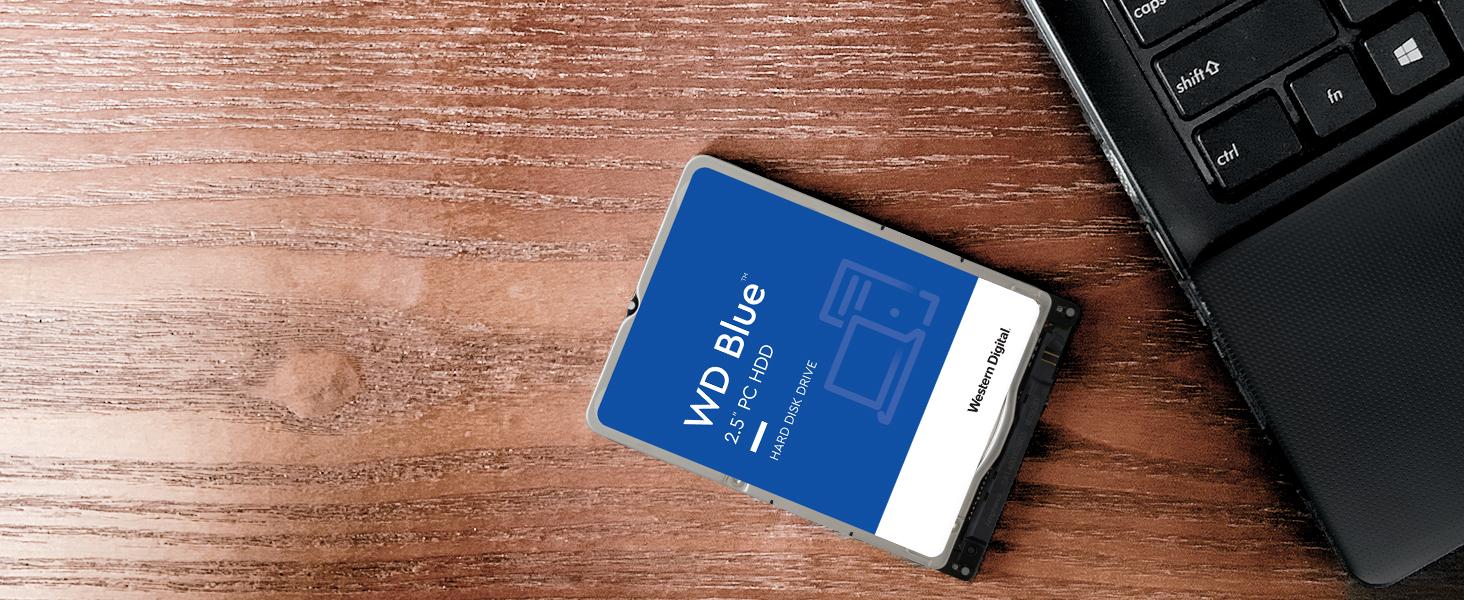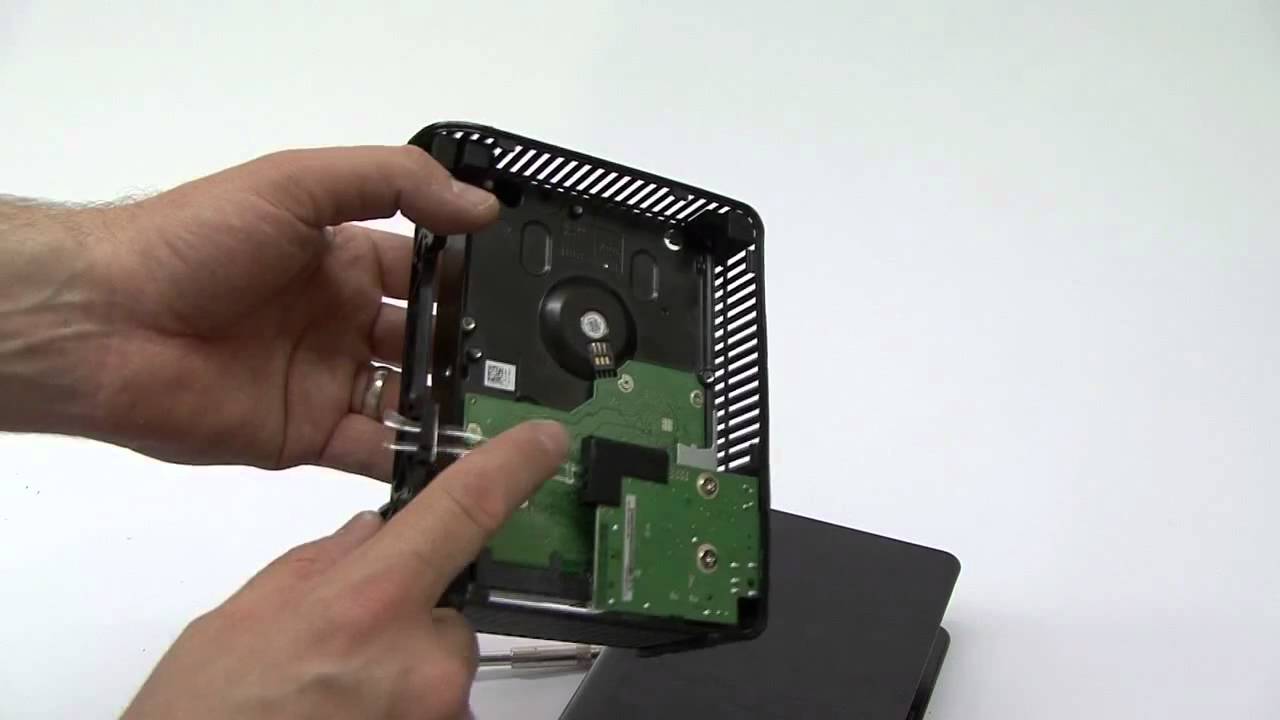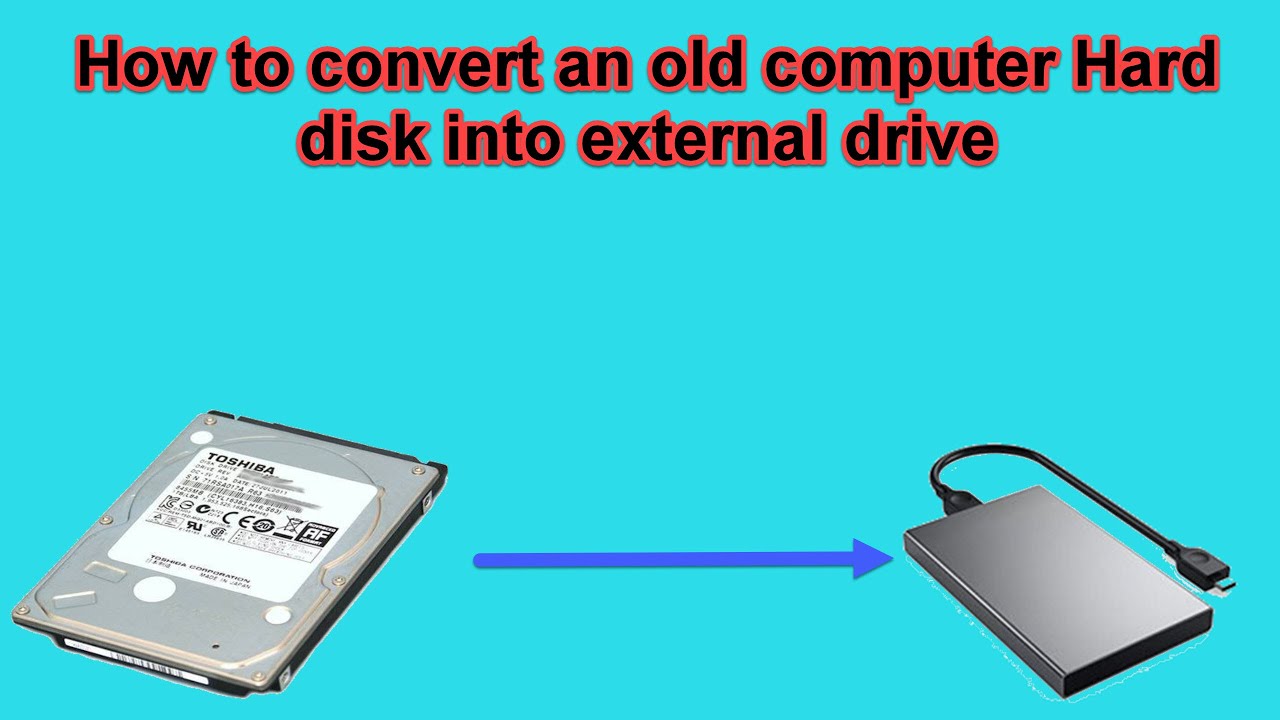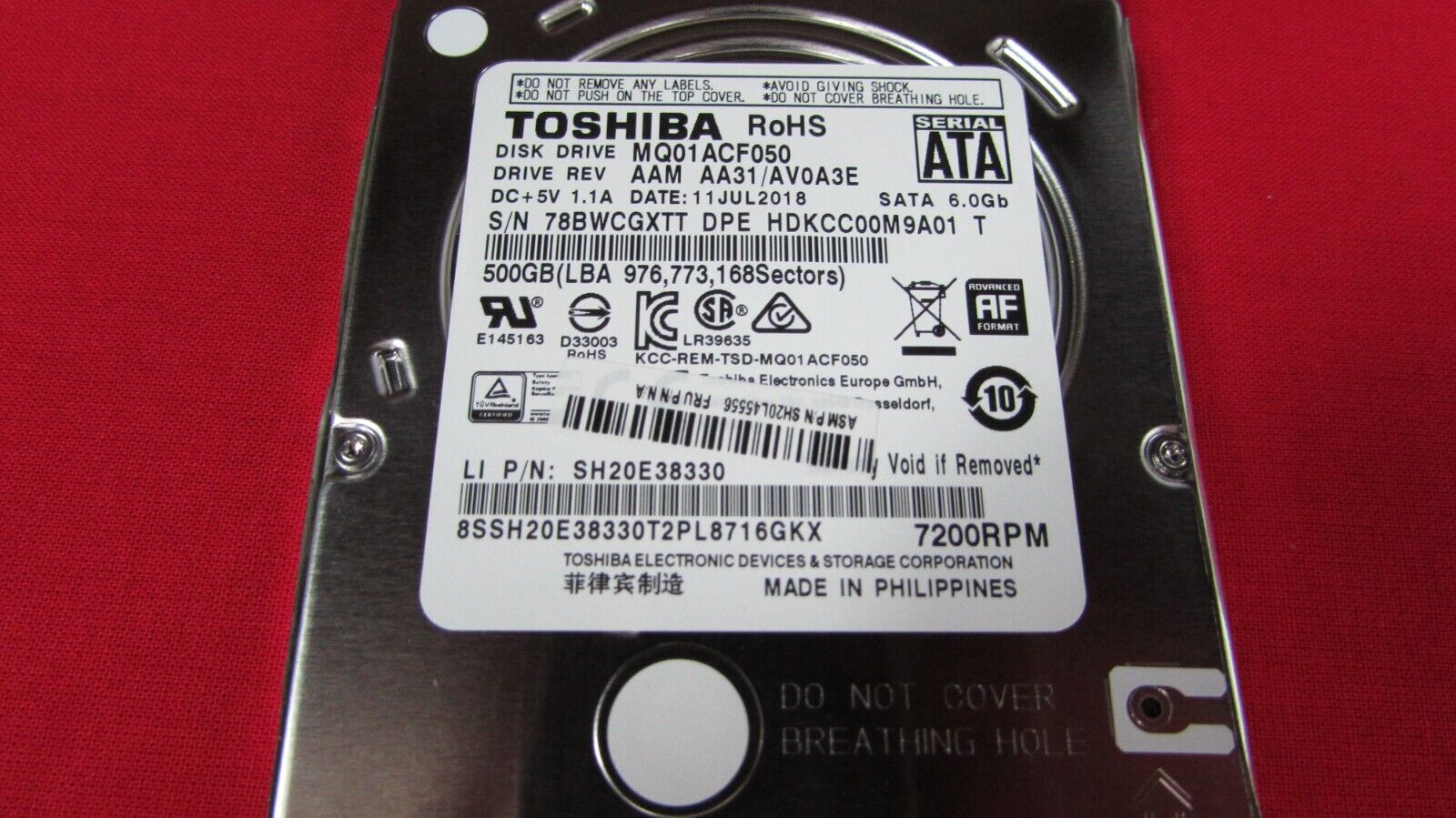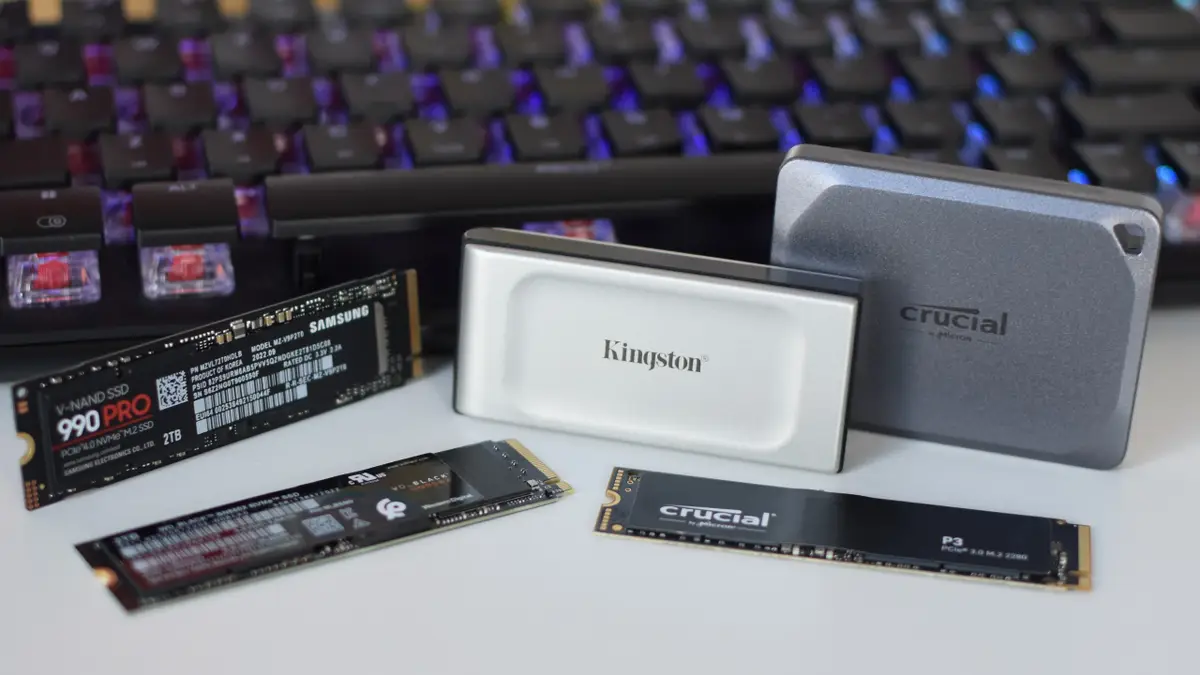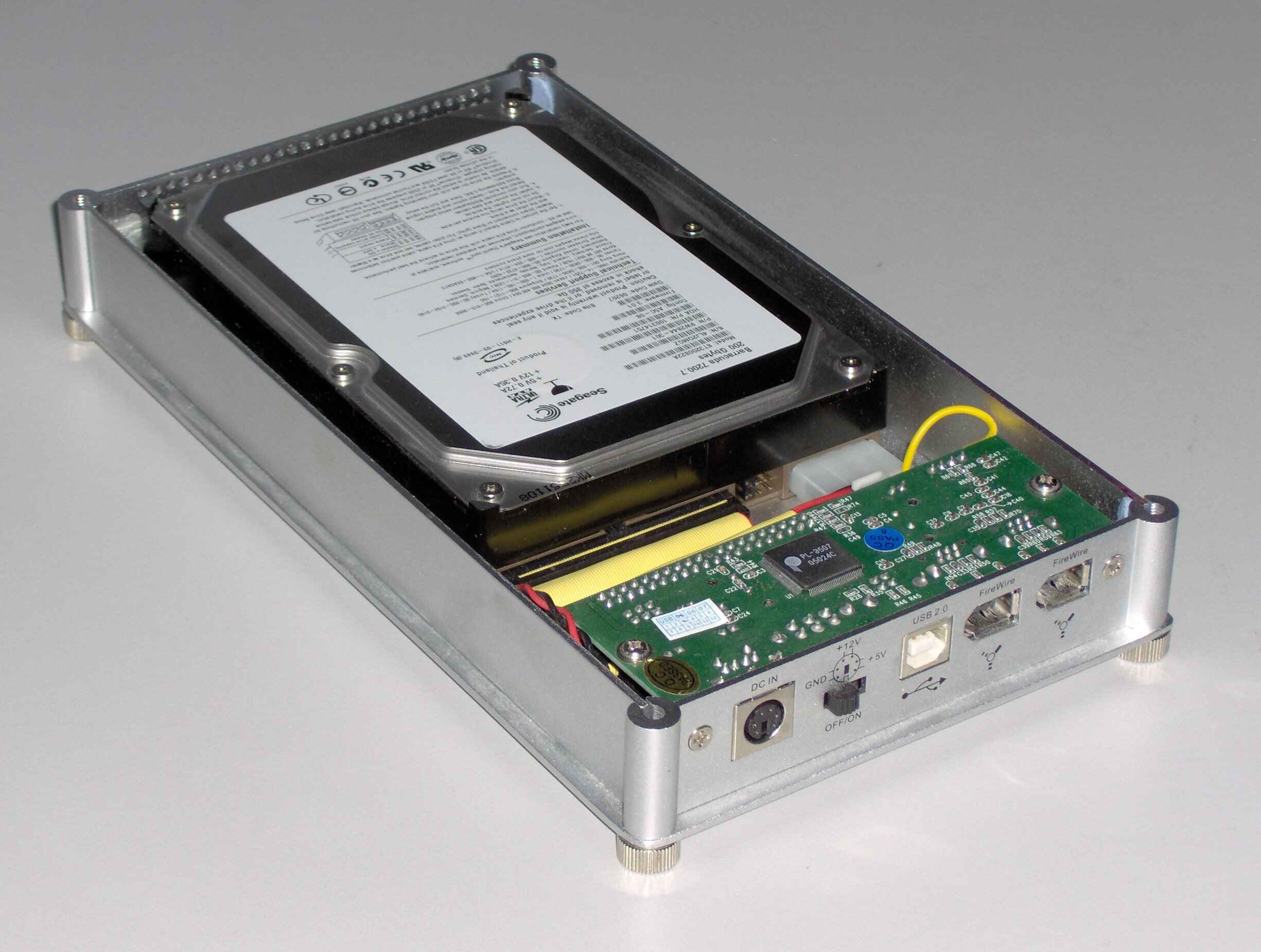Introduction
Welcome to the world of data storage and convenience. With the increasing need for additional storage space, external hard drive enclosures have become essential gadgets for many computer users. Whether you are a professional working with large files and data sets or a casual user looking to back up important files, an external hard drive enclosure can provide the solution you need.
An external hard drive enclosure is a device that allows you to convert an internal hard drive into an external one. It provides a protective casing for the hard drive, allowing you to connect it to your computer or other devices via a USB or other interface. This simple yet powerful tool offers a range of benefits and options for users.
In this article, we will explore the world of external hard drive enclosures, uncovering their benefits, different types, and how to choose the right one for your needs. We will also guide you through the process of installing an internal hard drive into an external enclosure and provide tips on getting the most out of your external storage solution.
Whether you are a tech enthusiast, a student, or a professional, understanding the power of external hard drive enclosures can make a significant difference in your storage and data management capabilities. So, let’s dive in and discover what makes these devices so valuable.
What Is an External Hard Drive Enclosure?
An external hard drive enclosure is a device that allows you to convert an internal hard drive into an external one. It serves as a protective housing for your hard drive, providing the necessary connections and interfaces to connect it to your computer or other devices.
By using an external hard drive enclosure, you can transform any spare internal hard drive you have into a portable and convenient external storage solution. This allows you to access and transfer your files between different computers, making it an excellent option for professionals who work on multiple devices or individuals who need to carry their files with them on the go.
These enclosures typically come with USB connectivity, enabling easy and universal connection to almost any computer or device. Some models may also offer additional interfaces such as Thunderbolt, eSATA, or FireWire, providing faster transfer speeds and compatibility with specific devices.
One of the key advantages of using an external hard drive enclosure is the flexibility it provides. You can choose the storage capacity that suits your needs by selecting the appropriate internal hard drive to install inside the enclosure. This means that you can easily upgrade the storage capacity of your external drive by swapping out the internal hard drive for a larger one, without the need to purchase a completely new external hard drive.
In addition to converting an internal hard drive into an external one, some enclosures also offer additional features like RAID support or built-in cooling systems. RAID (Redundant Array of Independent Disks) allows you to configure multiple hard drives in different ways to achieve a balance of performance and data redundancy.
Overall, an external hard drive enclosure is a versatile and cost-effective solution for expanding your storage capabilities and ensuring the safety of your valuable data. With a wide range of options available on the market, you can find the perfect enclosure to meet your specific needs and preferences.
Benefits of Using an External Hard Drive Enclosure
Using an external hard drive enclosure offers numerous benefits for both personal and professional users seeking reliable and portable storage solutions. Let’s explore some of the key advantages:
- Portability: By converting an internal hard drive into an external one, you gain the ability to easily carry your data with you wherever you go. Whether you are traveling, working from different locations, or simply need to share files with others, an external hard drive enclosure provides the convenience of portable storage.
- Flexibility and Scalability: External hard drive enclosures allow you to choose and upgrade the storage capacity according to your needs. You have the freedom to select the internal hard drive that suits your requirements and easily swap it out for a larger one in the future, without the need to purchase a new external hard drive.
- Data Security and Backup: External hard drive enclosures provide a reliable backup solution for your important files. By storing your data on an external drive, you can create a backup without relying solely on your computer’s internal storage. This protects you from potential data loss due to hardware failures or system crashes.
- Data Privacy and Protection: With an external hard drive enclosure, you have control over your data privacy. You can disconnect the drive when not in use, ensuring that your files are not accessible to unauthorized individuals. It provides an additional layer of security, particularly for sensitive or confidential information.
- Easy File Sharing and Transfer: External hard drive enclosures make it simple to share and transfer files between different computers or devices. You can connect the external drive to any compatible device, regardless of the operating system. This is particularly beneficial if you work on multiple devices or need to share files with colleagues or clients.
- Cost-Effective Solution: Purchasing an external hard drive enclosure is often more cost-effective than buying a pre-built external hard drive with the same storage capacity. By using your own internal hard drive, you can save money while still enjoying the benefits of portable storage.
- Longevity: Internal hard drives are designed to withstand the demanding conditions of daily use. By repurposing an internal drive with an external enclosure, you can extend its lifespan and make the most out of your investment.
These are just a few of the notable benefits that come with using an external hard drive enclosure. Whether you need portable storage, data protection, or easy file sharing, an external hard drive enclosure offers a flexible, reliable, and cost-effective solution for your storage needs.
Overview of External Hard Drive Enclosure Types
External hard drive enclosures come in various types and configurations to accommodate different storage needs and preferences. Let’s take a closer look at the common types available:
- Single Bay Enclosures: These are the most basic type of external hard drive enclosures, designed to house a single internal hard drive. They are compact, affordable, and offer easy installation. Single bay enclosures are an excellent choice for individuals who need a simple and portable storage solution.
- Multi-Bay Enclosures: Multi-bay enclosures can accommodate multiple internal hard drives, ranging from two to six or more bays. They often feature RAID functionality, allowing you to configure the drives for improved performance or data redundancy. Multi-bay enclosures are ideal for professionals, content creators, and IT enthusiasts who require higher storage capacity and increased data protection.
- Hot-Swap Enclosures: Hot-swap enclosures are designed for easy and convenient drive swapping. They allow you to insert or remove hard drives without having to power down the enclosure or the connected device. Hot-swap enclosures are commonly used in server environments or situations where continuous operation is required.
- Tool-Free Enclosures: As the name suggests, tool-free enclosures provide a hassle-free installation process. They feature caddies or trays that allow you to securely insert the hard drive without needing any tools. Tool-free enclosures are popular among users who frequently switch or upgrade their internal drives.
- External SSD Enclosures: External SSD enclosures are specifically designed to accommodate solid-state drives (SSDs) instead of traditional spinning hard drives. SSDs offer faster data transfer speeds and improved durability compared to HDDs. External SSD enclosures are a great choice for users who prioritize speed and reliability for their storage needs.
- Wireless Enclosures: Wireless enclosures provide the convenience of accessing your stored data without the need for a physical connection. They use Wi-Fi or Bluetooth technology to establish a wireless connection between the enclosure and your computer or other devices. Wireless enclosures are suitable for individuals who prefer a cable-free environment or need to share files across multiple devices wirelessly.
These are just a few examples of the external hard drive enclosure types available on the market. Each type has its own advantages and features, so it’s essential to consider your specific needs and preferences when choosing the right enclosure for your storage requirements.
Choosing the Right External Hard Drive Enclosure
When selecting an external hard drive enclosure, there are several factors to consider to ensure you choose the right one for your needs. Here are some key points to keep in mind:
- Compatibility: Ensure that the enclosure you select is compatible with the type and size of the internal hard drive you want to install. Consider factors such as the interface (USB, Thunderbolt, eSATA, etc.) and the maximum storage capacity supported by the enclosure.
- Connectivity Options: Determine the connectivity options you require based on your device and data transfer speed needs. USB 3.0 is a common and versatile choice, offering fast transfer speeds and compatibility with most devices. However, if you require even faster data transfer or specific interfaces, consider enclosures with Thunderbolt, eSATA, or other connection options.
- Enclosure Size and Design: Consider the physical dimensions and aesthetics of the enclosure. If portability is a priority, choose a compact and lightweight enclosure that you can easily carry in a bag or pocket. Additionally, ensure that the design of the enclosure matches your personal preferences and fits well with your setup.
- Support for RAID and Additional Features: If you require RAID functionality or other advanced features, choose an enclosure that supports the RAID level you need. Additionally, look for additional features like built-in cooling systems, encryption, or power-saving options depending on your specific requirements.
- Budget: Set a budget for your external hard drive enclosure purchase and find options that fit within it. Remember to consider the long-term value and quality of the enclosure rather than purely focusing on upfront costs.
- User Reviews and Recommendations: Before making a purchase, read user reviews and recommendations to gain insights into the reliability and performance of the enclosure. Look for feedback from users who have similar needs and use cases to yours to get a better sense of whether the enclosure will meet your expectations.
By considering these factors, you can narrow down your options and choose an external hard drive enclosure that aligns with your specific needs and preferences. Remember, the right enclosure should provide the necessary compatibility, connectivity, and features to ensure seamless data storage and transfer for your valuable files.
How to Install an Internal Hard Drive into an External Hard Drive Enclosure
Installing an internal hard drive into an external hard drive enclosure is a relatively straightforward process. Follow these steps to successfully complete the installation:
- Gather the necessary tools: Ensure you have the appropriate tools on hand, which usually include a screwdriver and any additional tools specific to the enclosure model.
- Prepare the internal hard drive: If you are using a new or unused internal hard drive, ensure it is properly formatted and ready for installation. If you are repurposing an existing hard drive, backup any important data before proceeding.
- Open the enclosure: Remove any screws or fastenings that hold the enclosure together. Carefully open the enclosure to expose the internal compartment where the hard drive will be installed.
- Prepare the enclosure: Depending on the enclosure type, it may require additional preparations, such as attaching mounting brackets or inserting caddies/trays for tool-free installation. Follow the manufacturer’s instructions specific to your enclosure model.
- Connect the hard drive: Gently attach the internal hard drive to the connector inside the enclosure. Ensure that the connectors on the hard drive match the connectors on the enclosure, aligning the SATA or IDE connections accordingly.
- Secure the hard drive: Use the provided screws or fasteners to secure the hard drive in place within the enclosure. Tighten them snugly but avoid over-tightening to prevent damage to the drive or enclosure.
- Close the enclosure: Carefully close and secure the enclosure using the screws or fasteners. Ensure that all parts fit together properly and allow for a secure and stable connection.
- Connect the enclosure to your computer or device: Use the appropriate cable (usually USB) to connect the enclosure to your computer or device. Ensure the connection is secure, and the cable is inserted into the correct port.
- Power on and configure: Turn on your computer or device and wait for it to recognize the external hard drive. Follow any on-screen prompts or instructions to configure and format the drive if necessary.
- Start using your external hard drive: Once the installation and configuration are complete, your internal hard drive is now functional as an external drive. You can start using it to store, access, and transfer your files as needed.
Remember, always refer to the specific instructions provided by the enclosure manufacturer to ensure a successful installation. Taking proper care during the installation process will help ensure the longevity and functionality of your external hard drive enclosure.
Tips for Using an External Hard Drive Enclosure
To make the most out of your external hard drive enclosure and ensure a smooth experience, consider the following tips:
- Handle with care: Although external hard drive enclosures provide protection for your internal hard drive, it’s still important to handle them with care. Avoid dropping or subjecting the enclosure to physical impacts that can potentially damage the drive inside.
- Disconnect safely: Before disconnecting your external hard drive enclosure from your computer or device, make sure to safely eject or disconnect it. This ensures that any ongoing data transfers are completed and prevents potential data loss or corruption.
- Regularly back up your data: Even though external hard drive enclosures provide additional storage and backup options, it’s always a good practice to regularly back up your data to other devices or cloud storage. This extra layer of protection protects your important files from potential hardware failures or accidents.
- Keep the enclosure cool: Some enclosures come with built-in cooling systems, but it’s still important to ensure adequate airflow around the enclosure. Avoid placing it in an area with poor ventilation or exposing it to excessive heat or direct sunlight.
- Use secure storage: If you have sensitive or confidential data stored on your external hard drive, consider using encryption or password protection features provided by the enclosure or using encryption software to add an extra layer of security.
- Regularly update firmware: Some external hard drive enclosures may have firmware updates available. Check for firmware updates on the manufacturer’s website and periodically update the firmware to ensure optimal performance and compatibility.
- Avoid abrupt movements during data transfers: To prevent data loss or drive damage, try to avoid moving the external hard drive enclosure abruptly while data is being transferred. Sudden movements can disrupt the connection and potentially corrupt or lose your files.
- Protect from power surges: Consider using a surge protector or uninterruptible power supply (UPS) to protect your external hard drive enclosure from sudden power surges or outages. This helps to safeguard your data and prevents potential hardware damage.
- Regularly clean the enclosure: Dust and debris can accumulate on the external hard drive enclosure, affecting its performance and potentially causing overheating. Regularly clean the enclosure using a soft, lint-free cloth to remove any dirt or dust that may have accumulated.
- Check for errors and perform maintenance: Periodically check your external hard drive for errors and perform maintenance tasks, such as disk cleanup or defragmentation, to optimize its performance. Use disk checking tools or software provided by the operating system to scan and repair any potential disk errors.
By following these tips, you can ensure that your external hard drive enclosure remains in optimal condition and that your data stays secure and accessible whenever you need it.
External Hard Drive Enclosure vs. External Hard Drive: Which Is Better?
When it comes to choosing between an external hard drive enclosure and an external hard drive, it ultimately depends on your specific needs and preferences. Let’s compare the two options to help you determine which one is better suited for you:
External Hard Drive Enclosure:
- Flexibility: External hard drive enclosures offer greater flexibility as they allow you to convert any compatible internal hard drive into an external one. This means you can choose the storage capacity and type of drive that suits your needs.
- Cost-Effectiveness: By using an external hard drive enclosure, you can repurpose spare or older internal hard drives, thus potentially saving money compared to purchasing a new external hard drive with the same storage capacity.
- Scalability: With an external hard drive enclosure, you have the flexibility to easily upgrade the storage capacity by swapping the internal hard drive for a larger one as your needs grow.
External Hard Drive:
- Convenience: External hard drives come ready to use out of the box and do not require any assembly or installation. They are plug-and-play devices, making them more convenient for users who prefer a hassle-free storage solution.
- Portability: External hard drives are designed for portability, with the drive enclosed within a compact and sturdy casing. They are ideal for users who frequently need to carry their data between different locations.
- Simplicity: For users who are not tech-savvy or prefer a simple and straightforward storage solution, an external hard drive offers a user-friendly experience without the need for any additional configuration.
Ultimately, the choice between an external hard drive enclosure and an external hard drive comes down to your specific requirements. If you value flexibility, cost-effectiveness, and the ability to customize and upgrade your storage, then an external hard drive enclosure is the better option. On the other hand, if you prioritize convenience, portability, and simplicity, an external hard drive may be more suitable for you.
It’s worth noting that some external hard drives may offer features typically found in external hard drive enclosures, such as support for RAID configurations or additional data security measures. Assess your needs and compare the specifications and features of different external hard drives and enclosures to make an informed decision.
Ultimately, the “better” option depends on your storage requirements, preferences, and budget. Consider your priorities and choose the option that aligns with your specific needs and provides the best solution for your data storage and management.
Conclusion
External hard drive enclosures provide a versatile and cost-effective solution for expanding storage capabilities, enhancing data protection, and enabling convenient data transfer. By converting an internal hard drive into an external one, you can enjoy the benefits of portability, flexibility, and scalability.
In this article, we explored the concept of external hard drive enclosures, their benefits, different types, and how to choose the right one for your needs. We also covered the installation process and provided tips for using and maintaining external hard drive enclosures.
When deciding between an external hard drive enclosure and an external hard drive, consider factors such as flexibility, cost-effectiveness, convenience, portability, and simplicity. Both options have their own advantages and are suitable for different scenarios and user preferences.
Regardless of your choice, it’s crucial to handle external hard drive enclosures, or external hard drives, with care and regularly back up your data to ensure its safety. Protecting your valuable files and maintaining the functionality of your storage solution should always be a priority.
Whether you are a professional in need of additional storage for large files or a casual user looking for a reliable backup solution, external hard drive enclosures offer a convenient and customizable way to meet your storage needs.
Stay informed about the latest technologies and options available in the market, and choose an external hard drive enclosure or external hard drive that aligns with your requirements. With the right choice, you can securely store and access your data, enjoy the benefits of portability, and have peace of mind knowing that your files are protected.







